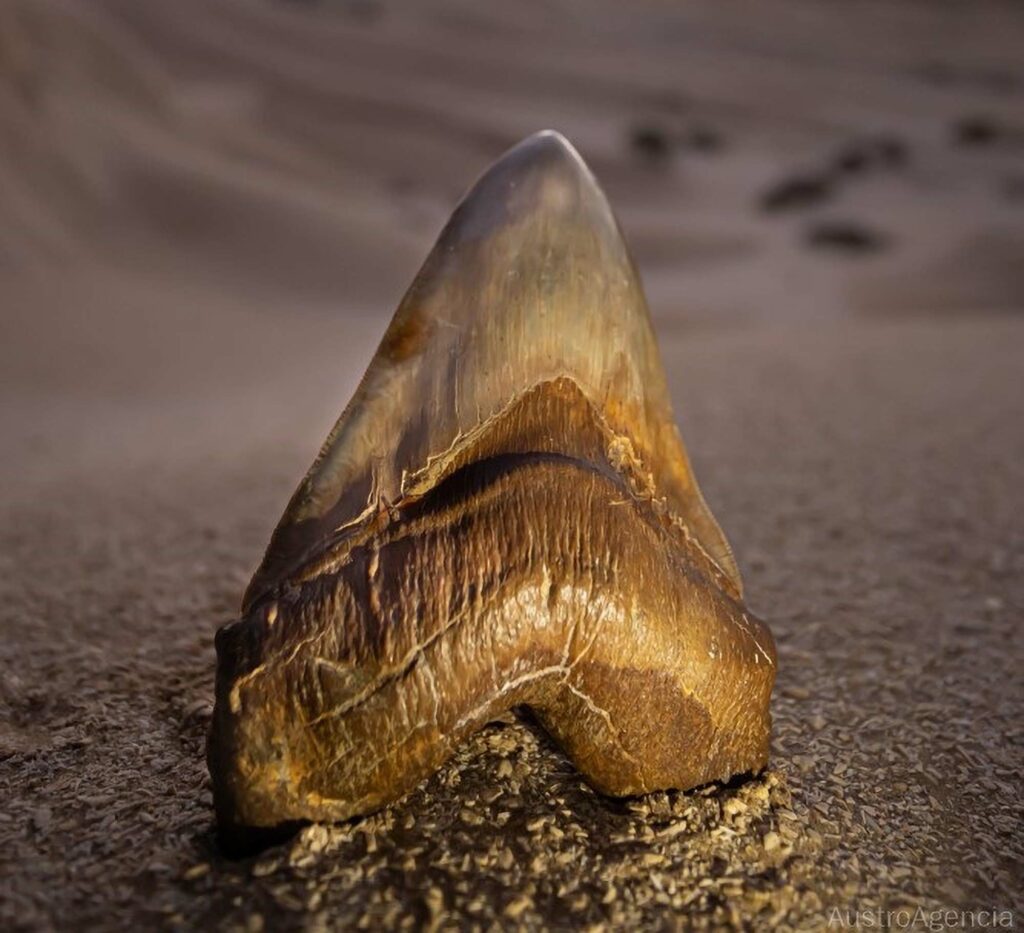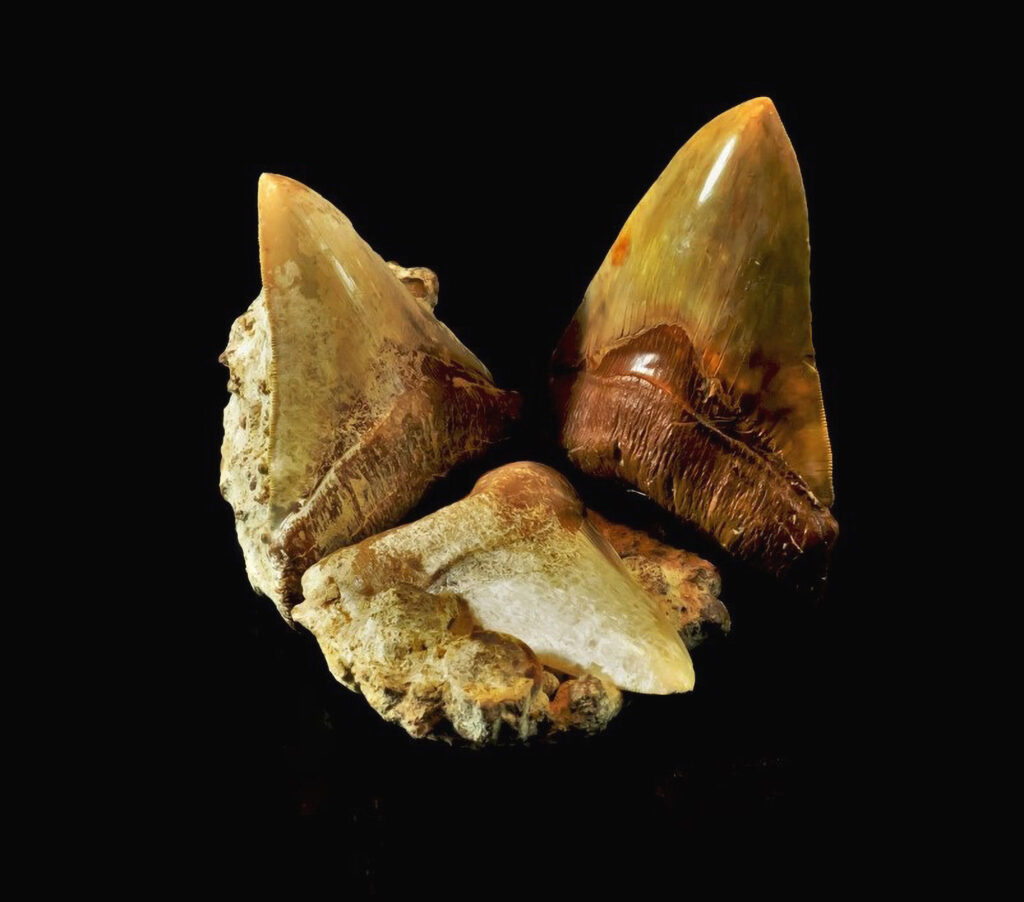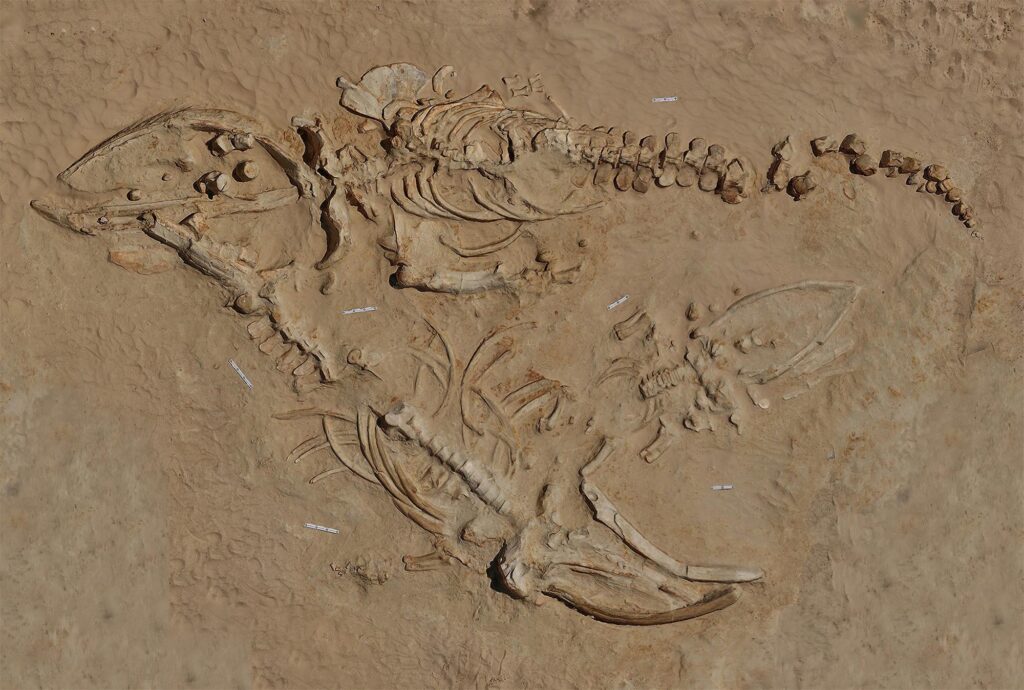These giant teeth from an extinct prehistoric megalodon shark have been found in the Atacama desert and a top expert has said that despite treasure hunters pillaging the area, Chile has “one of the largest scientific collections of megalodon teeth in the world”.
The discovery of the giant teeth belonging to the prehistoric shark that is believed to have lived between 23 and 2 million years ago, was made in the Bahia Inglesa Formation, located in the Atacama desert in northern Chile, near the Pacific coast.
Newsflash spoke to Pablo Quilodran, the Executive Director of the Atacama Palaeontology and Natural History Research and Advancement Corporation, in an exclusive interview and he said that the megalodon was “by far the largest shark of all time, a super predator whose wingspan is estimated to be between 16 and 20 metres (52 and 66 feet) long.”

(CIAHN-ATACAMA/Newsflash)
He said: “In the Atacama region there are extraordinary fossil deposits, and in the case of the coast, there are remains of marine vertebrates from about 8 million years ago (Neogene period).”
Quilodran said that extensive mining operations and looting by treasure hunters had led to possibly hundreds of teeth from megalodons as well as numerous other prehistoric artefacts being sold on the black market.
He said: “Although in Chile, fossils are protected by law, for many years one of the most spectacular localities, the Bahia Inglesa Formation, was the victim of destruction by deregulated mining operations and from looting by illegal fossil hunters.”
He added, however, that some of them had been returned to Chile, allowing it to build the world’s most impressive collection.
He said: “According to informal counts, we know that hundreds of megalodon teeth were found and sold on the international market. Some of them were returned to the Palaeontological Museum of the city of Caldera and the Chilean National Museum of Natural History.

(CIAHN-ATACAMA/Newsflash)
“With this, we undoubtedly have one of the largest scientific collections of megalodon teeth in the world.”
Explaining how the teeth from a marine animal were found in the middle of the desert, the expert said that this was “because the sea level has changed over millions of years (marine transgression and regression).
“This is visible not only in the abundant marine fossils found in sediments today, but also in the geomorphology of this part of the desert, where we can see natural esplanades, which are ancient marine terraces that testify to these different sea levels.
“In short, the sea has receded, but the ground has also risen as a result of earthquakes and subduction of plates, phenomena that we Chileans know and experience so well.”
Quilodran said that the English naturalist Charles Darwin reported having found some megalodon teeth during his “trip to Chile in 1835”.

Remains of the extinct megalodon shark, including its huge teeth, were found in the Atacama desert, in northern Chile.
(CIAHN-ATACAMA/Newsflash)
Remains of the extinct megalodon shark, including its huge teeth, were found in the Atacama desert, in northern Chile.
(CIAHN-ATACAMA/Newsflash)
But he added: “However, the diversity and abundance is a novelty.”
And Quilodran also said that recent discoveries had put the total number of different shark species found in the area to 25.
He said: “In the case of sharks, it is not only Megalodon, we recently found a new sawshark record for the area, this adds up to more than 25 different species of shark that have been found in the sector.”
Quilodran explained that a lot of these discoveries were down to sheer luck. He said: “The interesting thing is that much of these findings are fortuitous and did not respond to systematic scientific activity.”
But future discoveries will no doubt be subject to more rigorous planning, with the experts saying: “Some very good news is that for the first time, continuous scientific research will be carried out thanks to the recently created Atacama Palaeontology and Natural History Research and Advancement Corporation (CIAHN ATACAMA), we are sure that great discoveries are yet to come.”
The implications of the discoveries of megalodon teeth in the Atacama desert are huge for science, with Quilodran saying: “The unusual abundance of megalodon remains in this part of the desert opens up expectations for new knowledge about many aspects of ancient life regarding this remarkable species of shark.

(CIAHN-ATACAMA/Newsflash)
“For example, what and how did it eat? New estimates of body size, growth speed, whether it was solitary or gregarious, internal temperature and palaeoenvironmental data, among many other topics.
“For its part, the Bahia Inglesa site also has an abundance of remains of bony fish, marine mammals, birds and even reptiles, and all the research potential to understand the evolution of a great diversity of different lineages of marine vertebrates is gigantic.”
The recently discovered megalodon teeth will eventually end up in a museum, where the public will be able to go and view them.
The expert said: “The megalodon teeth as well as all the fossils found in Chile are a National Monument owned by the State of Chile. In this case, they will become the custody of the CIAHN ATACAMA collection to nurture scientific research and pieces for the future Palaeontological Museum on an international scale that we intend to carry out.”
Discussing the possibility that the megalodon giant shark could still exist, the expert was categorical: “No, the Megalodon became extinct due to possible climatic changes around 2 million years ago.”
Although he did add that it “is always possible to find new species and animals that have gone unnoticed by science, but at 16 metres long, it would be very difficult to have not detected it.”

(Smithsonian Institution/Newsflash)
Despite megalodon being the largest shark of all time, it is also still possible that an even greater predator preyed on it, with the experts saying: “Megalodon was a super-predator that was possibly at the top of the food chain… however, teeth from another marine vertebrate have been found, this time a super-predatory cetacean that could rival this shark.
“This cetacean, a relative of sperm whales, is called Leviathan and its fossils have also been found on the Atacama coast, along with those of the Megalodon.”
To find out more about the author, editor or agency that supplied this story – please click below.
Story By: Joseph Golder, Sub-Editor: William McGee, Agency: Newsflash
The Ananova page is created by and dedicated to professional, independent freelance journalists. It is a place for us to showcase our work. When our news is sold to our media partners, we will include the link here.




